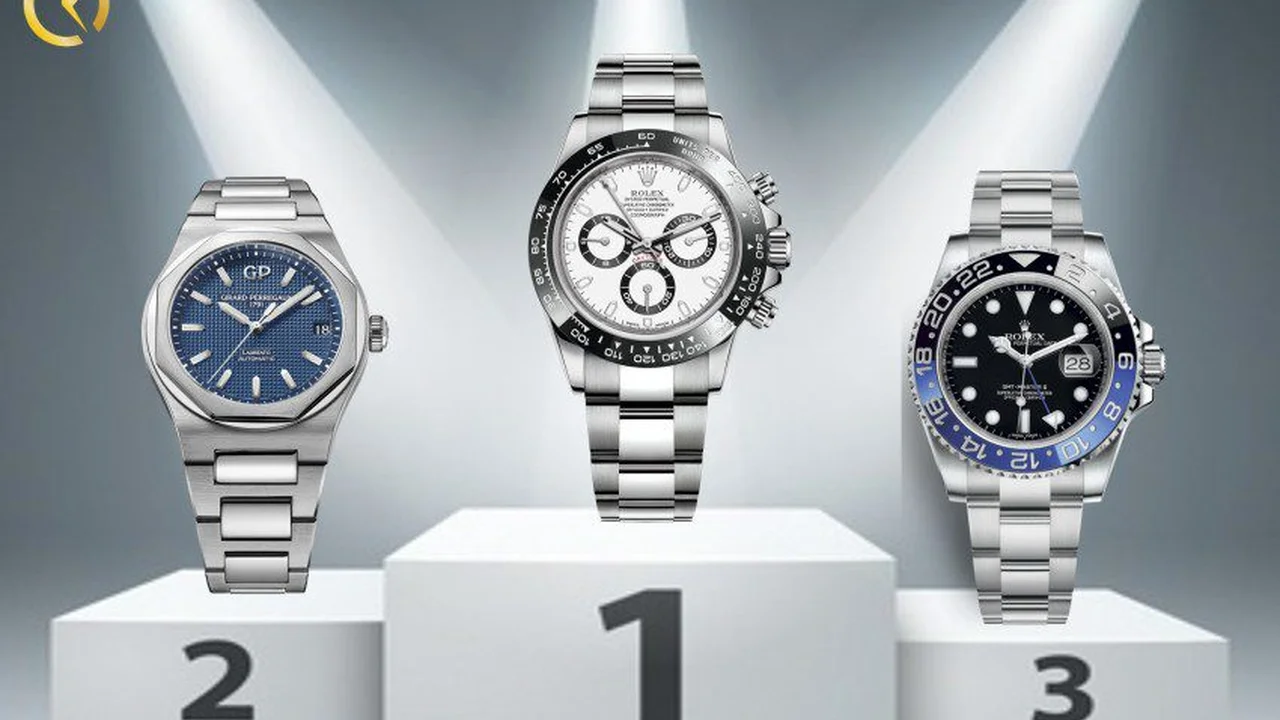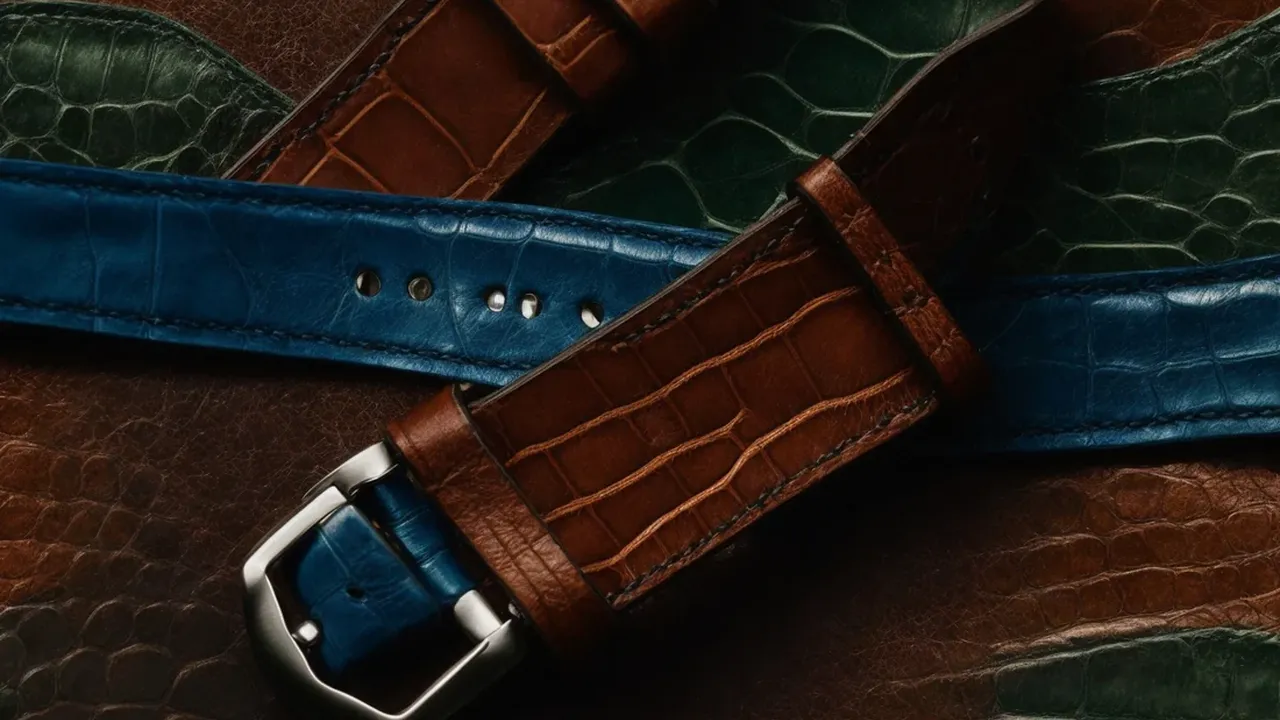Ultimate Guide to Choosing Your First Watch
Comprehensive guide for beginners on selecting their first watch. Learn about different types, movements, materials, and brands to make an informed decision.

Why Buy a Watch: More Than Just Telling Time
So, you're thinking about getting your first watch? Awesome! In today's digital world, where our phones constantly display the time, you might be wondering, 'Why even bother with a wristwatch?' Well, a watch is so much more than just a time-telling device. It's a statement piece, a reflection of your personality, and a functional accessory all rolled into one. It can add a touch of sophistication to your look, signal your attention to detail, and even become a cherished heirloom. Think of it like a really cool piece of jewelry that also happens to be incredibly useful.
Understanding Watch Types: Finding Your Perfect Style
The world of watches is vast and varied. Let's break down some of the most common types to help you narrow down your search:
- Dress Watches: These are the elegant, minimalist watches designed to be worn with formal attire. They usually have a slim profile, a simple dial, and a leather strap. Think black tie events or important business meetings.
- Dive Watches: Rugged and water-resistant, dive watches are built for underwater adventures (or just looking like you're ready for one!). They feature a rotating bezel to track elapsed time and are typically made from durable materials like stainless steel.
- Field Watches: Originally designed for soldiers in the field, these watches are all about practicality and legibility. They have a clear, easy-to-read dial and are often made from durable materials like stainless steel or titanium.
- Chronograph Watches: These watches feature a stopwatch function, allowing you to measure elapsed time. They usually have multiple sub-dials and pushers on the side of the case.
- Automatic Watches: Powered by the motion of your wrist, automatic watches are a marvel of engineering. They don't require batteries, but they do need to be worn regularly to stay wound.
- Quartz Watches: Battery-powered and highly accurate, quartz watches are a reliable and low-maintenance option. They're generally more affordable than automatic watches.
- Smartwatches: The modern multi-tool of the watch world. Connect to your phone, track fitness, receive notifications, and tell the time.
Decoding Watch Movements: Automatic, Manual, and Quartz
The movement is the heart of a watch, and it determines how the watch keeps time. Here's a breakdown of the three main types:
- Automatic Movements: As mentioned earlier, automatic movements are powered by the motion of your wrist. A rotor spins as you move, winding the mainspring that powers the watch. They're fascinating to watch and don't require batteries, but they can be more expensive and less accurate than quartz movements.
- Manual Movements: These movements require you to manually wind the watch every day (or every other day) to keep it running. They're a bit more involved than automatic movements, but they offer a connection to the watchmaking tradition.
- Quartz Movements: Quartz movements use a battery to power a quartz crystal, which vibrates at a precise frequency to keep accurate time. They're the most accurate and affordable type of movement.
Choosing the Right Watch Material: Steel, Titanium, and Beyond
The material of your watch affects its durability, weight, and overall look. Here are some common materials:
- Stainless Steel: A durable and versatile material that's resistant to corrosion. It's a popular choice for both dress and sport watches.
- Titanium: Lighter and stronger than stainless steel, titanium is a great option for people with sensitive skin. It's also more resistant to scratches.
- Gold: A luxurious and precious metal that adds a touch of elegance to any watch. Gold watches are often more expensive and require more care.
- Ceramic: Scratch-resistant and lightweight, ceramic is a modern material that's becoming increasingly popular in watchmaking.
- Plastic/Resin: Often found in more affordable watches, plastic and resin are durable and water-resistant.
Sizing Up Your Watch: Case Diameter and Wrist Size Guide
A watch should fit comfortably on your wrist and complement your overall style. Here's how to determine the right size:
- Case Diameter: This is the width of the watch case, measured in millimeters. A smaller case (38-40mm) is generally suitable for smaller wrists, while a larger case (42mm+) is better for larger wrists.
- Lug Width: This is the width of the strap where it attaches to the watch case. Make sure the strap width matches the lug width for a proper fit.
- Wrist Size: Measure your wrist with a soft measuring tape. Add about 1-2cm to the measurement to determine the ideal bracelet length.
Budget-Friendly Recommendations: Great First Watches for Under $200
Don't think you need to break the bank for a great first watch! Here are a few solid options for under $200, perfect for the US and Southeast Asian markets:
- Casio G-Shock DW-5600E-1V: (Approx. $50-$70) Indestructible and iconic. Great for active lifestyles. Perfect for everyday wear and extremely durable. Available widely in both the US and Southeast Asia.
- Seiko 5 SNK809: (Approx. $100-$120) A classic automatic field watch that offers incredible value. Versatile and stylish. A great entry point into automatic watches and easily found online.
- Timex Weekender: (Approx. $40-$60) Affordable and customizable with a wide variety of straps. Casual and versatile. A solid choice for a casual, everyday watch and readily available.
- Orient Bambino: (Approx. $150-$200) An elegant dress watch with an automatic movement. Sophisticated and affordable. A great option for those wanting a dress watch without spending a fortune.
Mid-Range Marvels: Stepping Up Your Watch Game (Up to $500)
Ready to invest a little more? These watches offer a step up in quality and features:
- Seiko Prospex SRP777 (Turtle): (Approx. $300-$400) A legendary dive watch with a comfortable cushion case. Durable and stylish. A popular choice among watch enthusiasts and readily available.
- Tissot PRX Powermatic 80: (Approx. $350-$450) A stylish integrated bracelet watch with a Swiss automatic movement. Modern and versatile. A great option for those wanting a stylish and reliable watch with a Swiss pedigree.
- Citizen Eco-Drive BM8180-03E: (Approx. $150-$200) Solar-powered and reliable, this field watch is a great everyday option. Low-maintenance and durable. A fantastic option for those wanting a hassle-free and eco-friendly watch.
Wearing Your Watch: Styling Tips for Every Occasion
A watch can be a powerful styling tool. Here are some tips for wearing your watch with confidence:
- Match Your Watch to Your Outfit: A dress watch looks best with formal attire, while a sport watch is more appropriate for casual outfits.
- Consider the Occasion: A flashy watch might not be the best choice for a business meeting, while a simple dress watch might get lost at a party.
- Pay Attention to Details: Match the color of your watch strap to your shoes or belt.
Caring for Your New Timepiece: Maintenance Essentials
To keep your watch running smoothly for years to come, follow these maintenance tips:
- Clean Your Watch Regularly: Use a soft cloth to wipe down the case and crystal.
- Avoid Extreme Temperatures: Don't expose your watch to extreme heat or cold.
- Get Your Watch Serviced: Have your watch serviced every few years to ensure it's running properly.
Final Thoughts on Finding Your First Watch
Choosing your first watch is an exciting journey. Take your time, do your research, and find a watch that you truly love. Whether you prioritize style, functionality, or affordability, there's a perfect watch out there for you. Happy hunting!
:max_bytes(150000):strip_icc()/277019-baked-pork-chops-with-cream-of-mushroom-soup-DDMFS-beauty-4x3-BG-7505-5762b731cf30447d9cbbbbbf387beafa.jpg)






